Extended chords can are more than just a staple in music theory; they’re the key to creating sonically rich and emotionally compelling music.
They can transform a simple melody into an irresistible one, add depth to harmonic progressions, and infuse tracks with a unique character.
As a music producer, understanding extended chords is crucial to elevate your music.
They can help you produce beats that truly stand out and captivate your audience.
That’s why, in today’s article, we’ll be breaking down:
- The fundamental concept of extended chords ✓
- The role of major triads & minor triads in forming extended chords ✓
- How seventh, ninth, eleventh, and thirteenth chords build upon basic triads ✓
- The significance of chord tones and extended notes ✓
- Techniques for creating unique & rich extended chord progressions ✓
- The impact of extended chords in various music genres ✓
- Expert tips for implementing extended chords in your tracks ✓
- Advanced techniques for using extended chords creatively ✓
- Much more ✓
By the end of this article, you’ll understand extended chords like a true professional and be able to create intricate harmonies and hypnotizing progressions.
This way, your tracks will stand out and instantly hook people in.
So, let’s dive in…
Table of Contents
What Are Extended Chords?
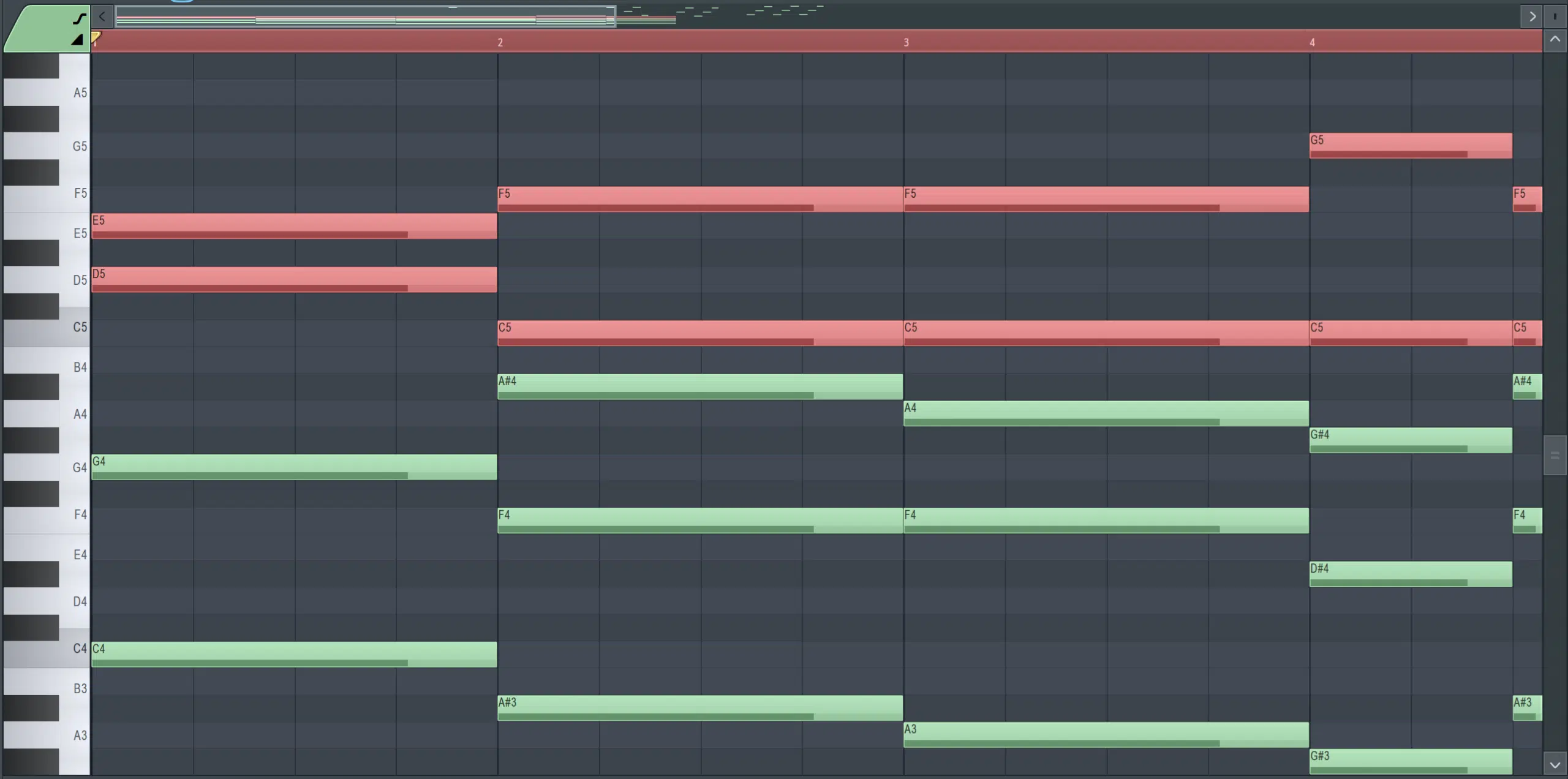
Extended chords, often based on the tertian chord system, are a key concept in music theory, vital for creating rich and complex harmonies.
Extended chords extend past the basic structure of triads by incorporating additional notes, typically from higher scale degrees.
For example, a standard C major triad consists of the notes C-E-G.
An extended chord version of this might include additional notes like:
- B (the seventh scale degree)
- D (the ninth scale degree)
- Even F (the eleventh scale degree)
These extended notes add new layers of harmonic depth 一 making extended chords a favorite in the industry for their rich and expressive sound.
An extended chord can incorporate some extra sophistication, intrigue, and emotional nuance to any track.
These extended chords aren’t formed by simply stacking any notes together…
They are carefully constructed by adding specific chord tones and extended notes to a basic chord structure.
For instance, adding a seventh note to a basic triad transforms it into a seventh chord, such as turning a C major triad (C E G) into a C major 7th chord (C E G B).
As extended chords, they offer a broader palette of sounds and harmonics.
This is crucial for creating captivating and intriguing chord progressions in various musical styles.
The Role of Major Triads and Minor Triads
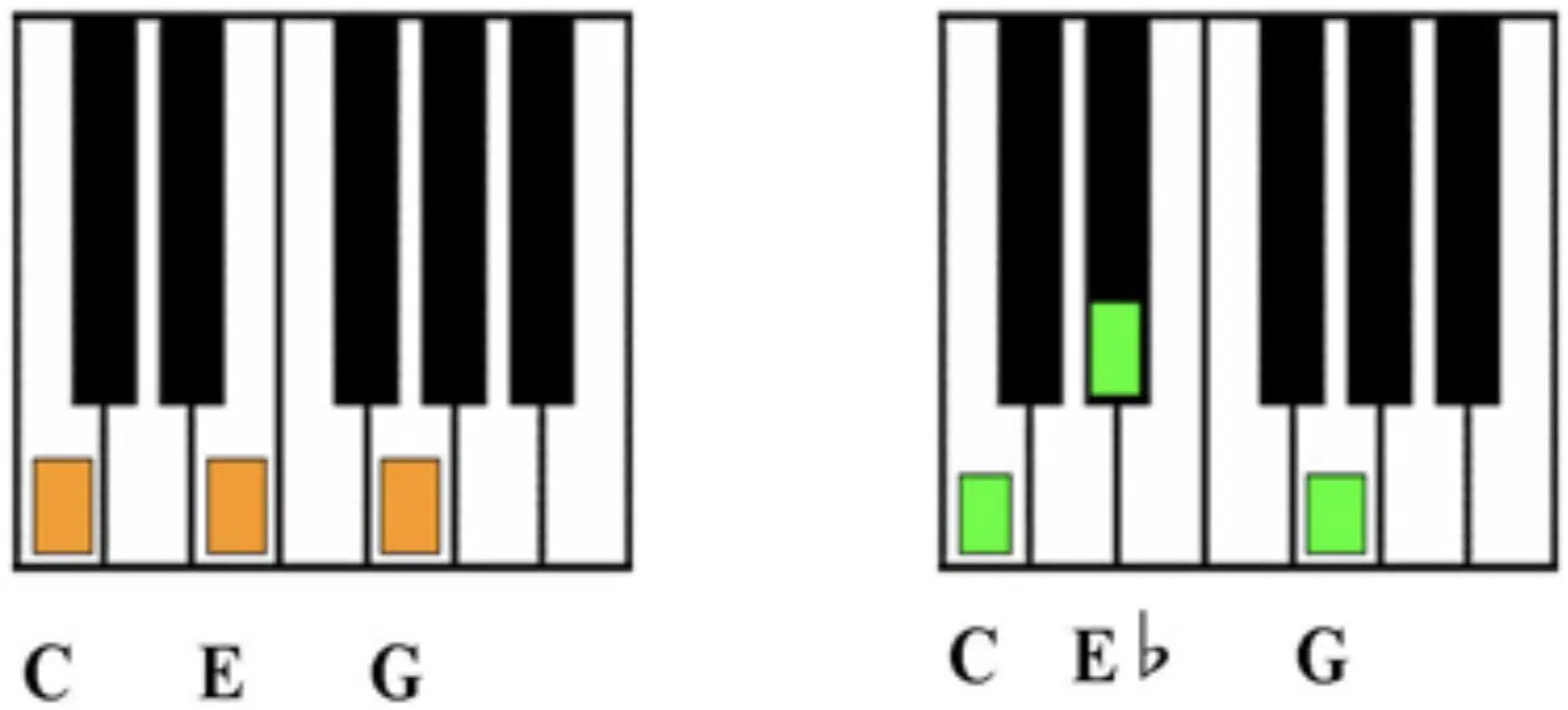
At the heart of extended chords lie the major and minor triads.
A major triad, formed by stacking two third intervals on a root note, typically consists of notes like C E G 一 offering a bright, resolved sound.
A minor triad, on the other hand, with its distinctively different interval structure (like C Eb G for a C minor triad) 一 providing a more melancholic tone.
The transformation of these triads into extended chords begins by adding notes beyond the basic triad.
For instance, a C major triad (C E G) can evolve into a C major 7th chord by adding a B (the seventh scale degree).
Similarly, adding the seventh, ninth, or eleventh notes to a minor triad creates extended minor chords, each with its unique flavor and emotional impact.
Understanding the interplay between major and minor triads and how they form the foundation of extended chords is vital.
A minor triad can change the entire mood of a chord progression when used in place of a major triad.
Seventh Chords: The Foundation
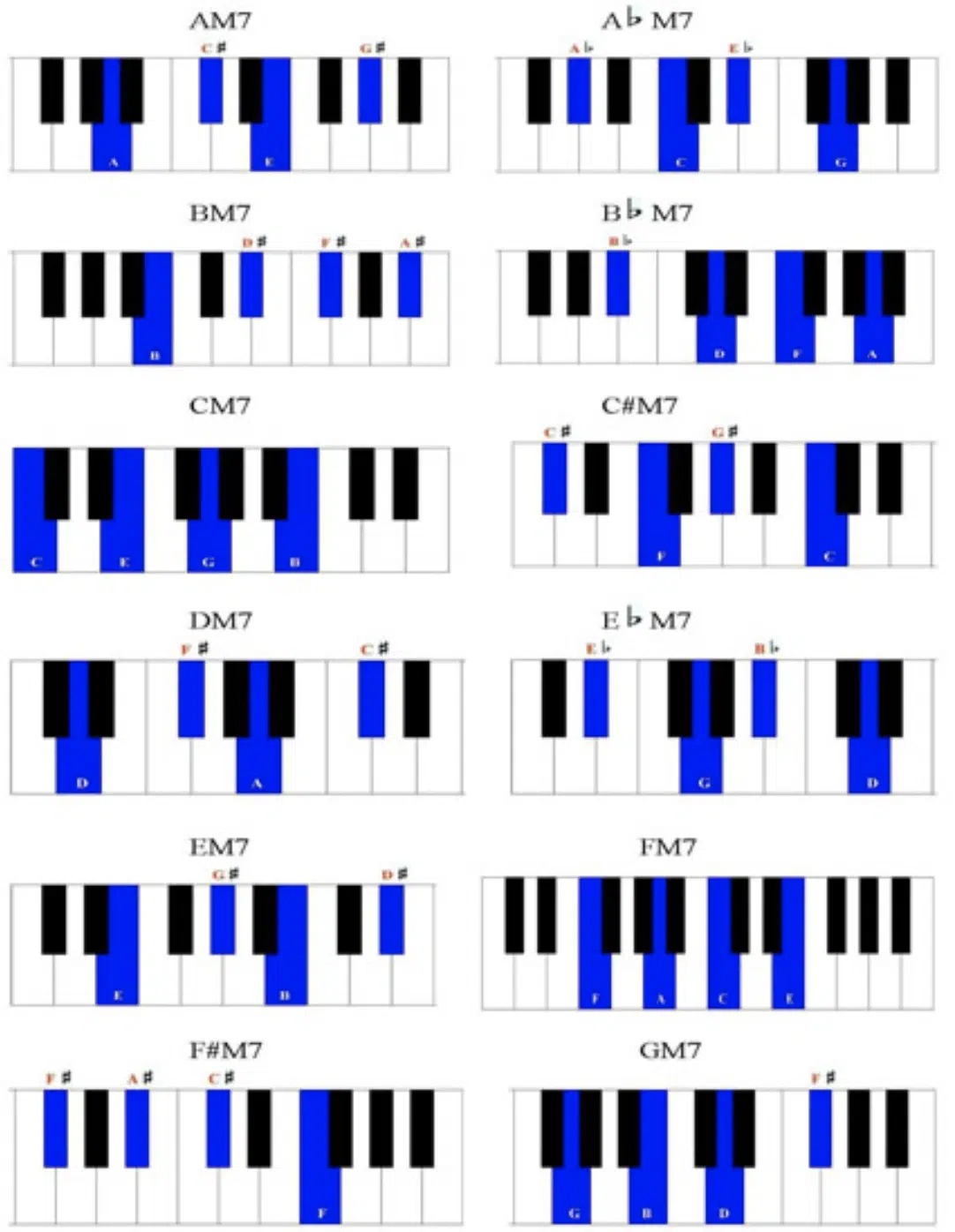
Seventh chords (four-note chords) are the stepping stones to more complex extended chords.
A seventh chord, such as a C major 7th (C-E-G-B), introduces a new layer of depth to the basic triad.
When it comes to extended chords, the seventh chord serves as a starting point for further extensions.
The variety within seventh chords themselves is pretty impressive.
The dominant 7th chord (like G-B-D-F) introduces a tension that begs for resolution, making it a favorite in jazz and blues.
The major 7th and minor 7th chords, on the other hand, offer different flavors.
The major 7th (like C-E-G-B) sounds smooth and resolved, while the minor 7th (like C-Eb-G-Bb) has a more somber tone.
When discussing extended chords, it’s important to recognize the role of the 7th chord in creating a fuller sound.
This chord acts as a foundation upon which additional extensions are built, like the:
- Ninth notes
- Eleventh notes
- Thirteenth notes
Each next extension adds a new layer of complexity and emotion to the chord.
The use of seventh chords can be a game-changer.
They add a level of sophistication to chord progressions 一 making them more appealing and emotionally engaging.
Knowing how to effectively use different types (chord type) of 7th chords is a skill that can significantly enhance your tracks.
-
Ninth Chords

Ninth chords involve adding a ninth scale degree to a seventh chord.
Take, for example, a C major ninth chord, which is notated as C-E-G-B-D 一 here, the D is the ninth chord tone added to the C major 7th chord.
This addition provides the chord with a richer, more layered sound; a characteristic widely appreciated in digital music production for its complexity and emotional depth.
These ninth chords can be a:
- Major chord
- Minor chord
- Dominant chord
Each brings its unique and intriguing quality to a chord progression.
A C major ninth chord (C E G B D) sounds complete and resonant, whereas a C minor ninth (C Eb G Bb D) introduces a more somber, introspective feel.
The versatility of ninth chords in crafting mood and texture is unmatched.
This makes them a staple in a variety of genres, from jazz music to electronic music.
-
Eleventh Chords and Thirteenth Chords

Eleventh and thirteenth chords take the concept of extended chords to new heights.
- An eleventh chord (such as a C11) 一 Typically involves adding a fourth interval (in this case, F) on top of a ninth chord.
- A thirteenth chord (like a C13) 一 Includes a sixth interval (A in this case) atop the eleventh chord.
These chords create dense, multi-layered harmonies that are particularly popular in complex musical styles, notably jazz music and experimental music.
The beauty of eleventh and thirteenth chords lies in their ability to produce rich, textured soundscapes.
For example, a C major 13th chord (C-E-G-B-D-F-A) offers a lush, expansive sound palette 一 helping you to explore new sonic territories.
These chords are essential tools for anyone looking to add depth to their songs/beats.
-
Pro Tip: Working With Major Chords vs Minor Chords
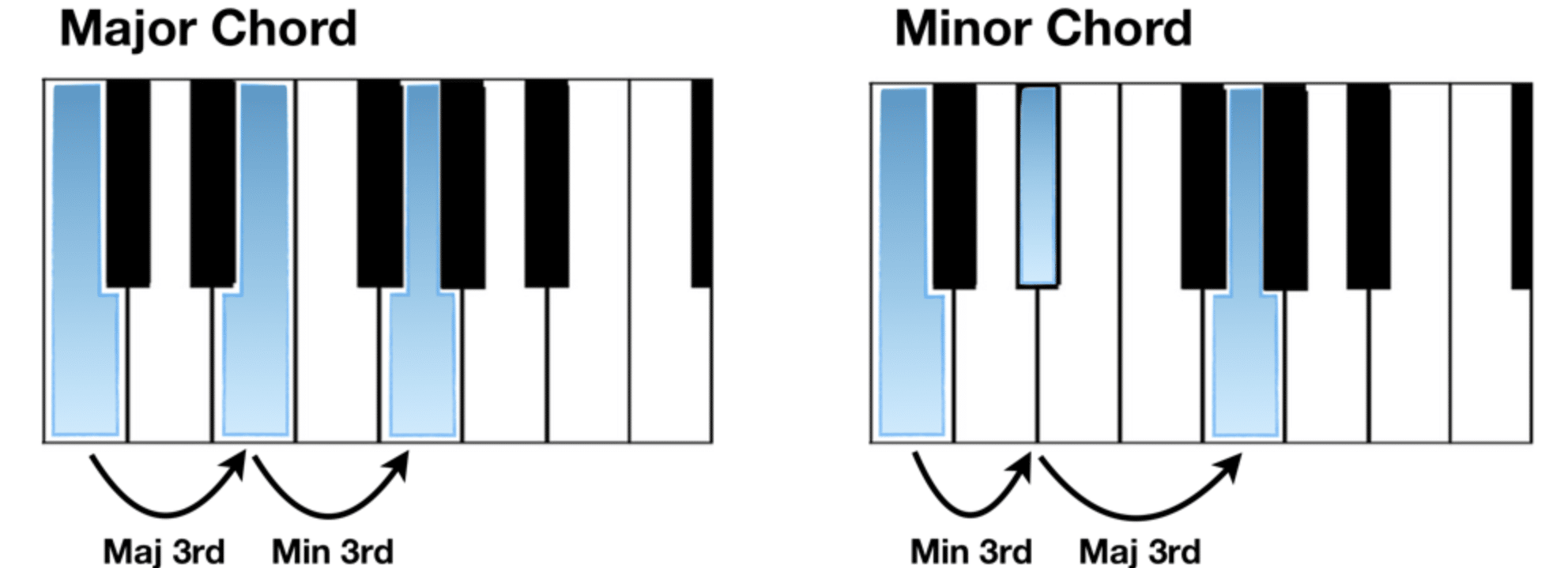
The distinction between a major chord and minor chord is fundamental in mastering extended chords.
Major chords, built on a major triad (like C E G for a C major chord), generally sound bright and conclusive.
Minor chords, based on a minor triad (such as C Eb G for a C minor chord), typically have a more introspective or melancholic tone.
This difference is crucial when you’re banging out beats that need to stand out.
Choosing between major and minor extended chords can significantly impact the emotional tone of a track.
For instance, a progression that moves from a C major 9th to a C minor 9th can shift the mood from uplifting to contemplative.
This demonstrates the powerful role these chords play in musical storytelling.
If you’d like to learn more about major chords and minor chords, we’ve got you covered.
Understanding Chord Tones

Chord tones are the essential building blocks of any chord, especially an extended chord.
These tones, typically the root note, third note, and fifth notes of the scale, form the core of the chord.
In extended chords, understanding these chord tones is crucial for maintaining harmonic coherence.
For instance, let’s look at a C major 7th (C E G B):
- The C-E-G 一 Are the chord tones.
- The B 一 Is an extended note.
These chord tones determine the basic quality of the chord; whether it’s a major third, minor 9th, or dominant 7th chord.
As a music producer, understanding chord tones is invaluable.
Chord tones provide a roadmap for exploring more complex harmonies.
In extended chords, while the additional notes add color and texture, it’s the extended chord tones that anchor the chord’s identity.
Knowing how to manipulate these chord tones, like altering the fifth or the third, can drastically change the color and emotion conveyed by the chord.
Extended Notes: Adding Depth and Complexity

Extended notes, chords with over three notes, are what give extended chords their name and their distinctive sound.
These notes are added on top of the basic chord tones, typically extending beyond the seventh scale degree (over three notes); the resulting chord is very appealing.
In a C major 9th chord (C E G B D), for example, D is the extended note 一 adding a new layer of harmonic complexity.
Extended notes can turn a simple chord progression into something much more:
- Intriguing
- Captivating
- Unique
- Emotionally resonant
The art of using extended notes effectively lies in understanding their relationship with the underlying chord tones.
In popular music production, where texture and depth are paramount, extended notes offer a way to achieve a more epic sound.
They allow you to create chords that are rich, full-bodied, and capable of conveying a wide range of emotions and atmospheres.
Building Your Extended Chords
Translating theory into practice, let’s break down how to build extended chords, from layering notes to adding extended notes and everything in between. This way, you can build chords and create complex chords with ease.
-
Layering Notes: Creating Unique Extended Chords
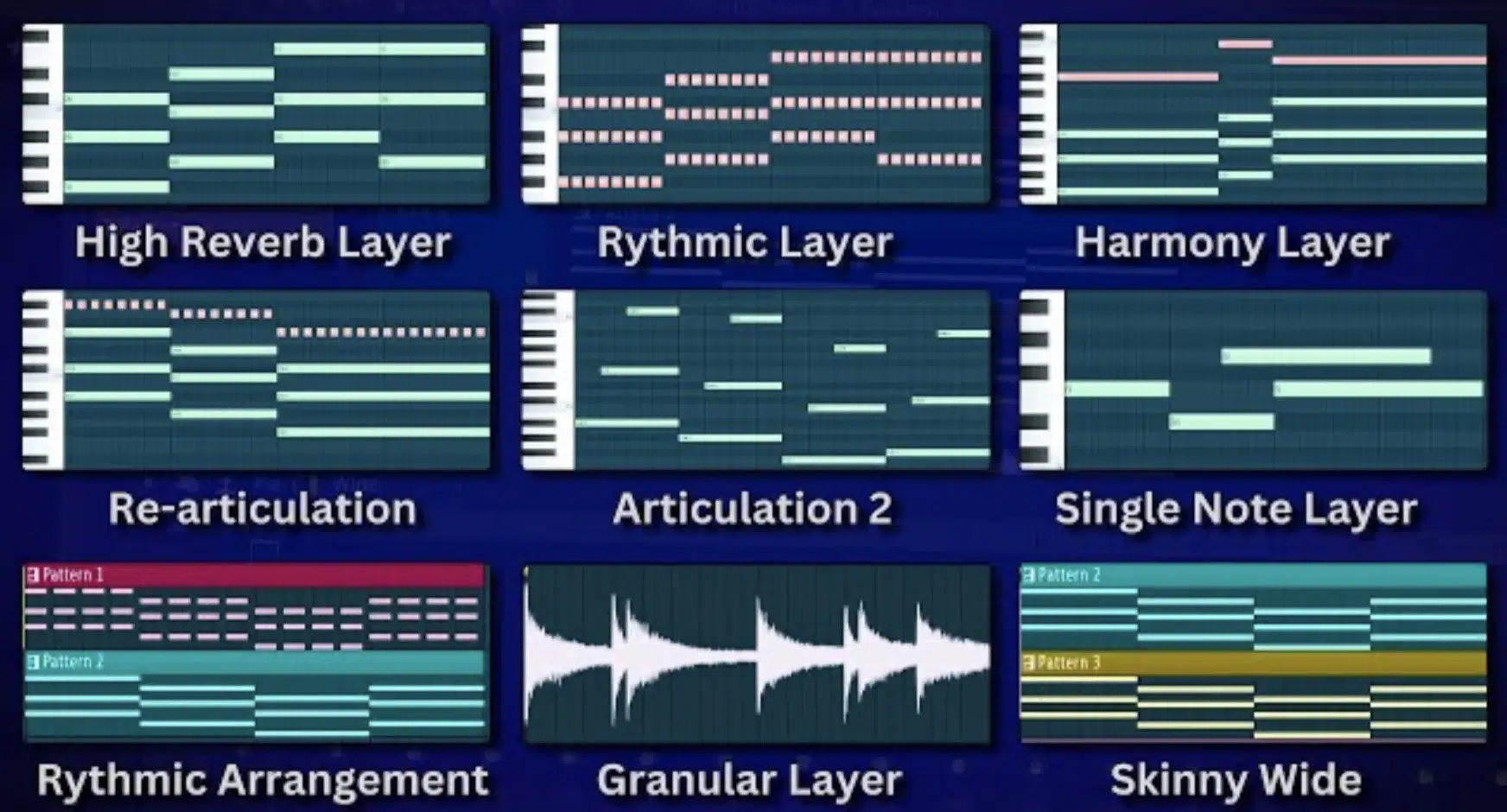
Layering notes is a major key technique in forming unique extended chords.
By adding chord tones and extended notes to a basic triad, you can create chords that are rich in harmony and depth.
For instance, starting with a C major triad (C-E-G), you can create a complex, sonically rich chord, like Cmaj13, by adding a:
- A seventh (B)
- A ninth (D)
- Maybe even an eleventh (F) or a thirteenth (A)
This practice of layering notes is especially important in music production, where the texture and depth of sound are paramount.
NOTE: When exploring extended chords and the construction of note chords, it’s essential to understand how adding specific note chords to a basic triad can dramatically alter its harmonic texture.
For example, adding a B and a D as note chords to a C major triad (C E G) transforms it into a Cmaj9 chord.
This introduces layers of resonance and complexity that significantly enrich the chord’s overall vibe and character.
The ability to create these chords with precision and creativity is a valuable production skill.
-
Using Scale Degrees and Octaves for Expansion
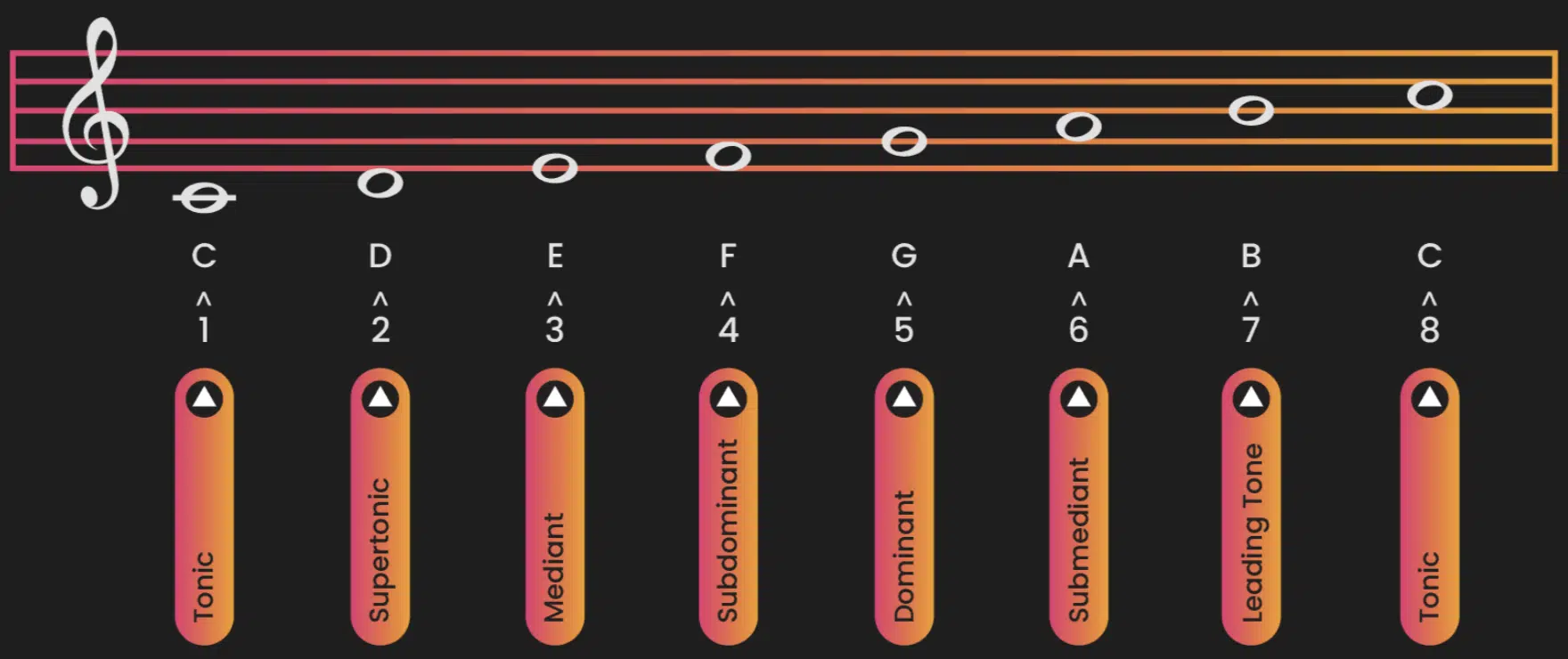
Understanding what a scale degree is, and the use of octaves is crucial in expanding the range and texture of extended chords, and altered chords/added tone chords in general.
Scale degrees refer to the position of a note within a scale (like a major/minor scale), and they play a vital role in determining which notes can be added to a chord.
For instance, in a C major scale, adding the seventh scale degree (B) to a C major triad forms a C major 7th chord.
The use of octaves in extended chords can also add a new dimension to your sound.
By duplicating notes in different octaves, you can create a fuller, more present chord.
This technique is particularly effective in popular music production, where the layering of sounds across octaves can lead to rich, textured musical landscapes.
NOTE: When working within one octave, it’s crucial to understand that most chords are built using notes from this range.
However, to achieve a fuller sound, consider extending to the next octave.
Adding tones from the next octave not only enhances the chord’s richness but also allows for a more complex interplay between the notes within one octave and those in the next octave.
Bonus: How To Creatively Use Chord Extensions In Your Tracks

Creative use of chord extensions can significantly enhance your tracks, adding depth and complexity to your tracks.
Experimenting with different combinations of chord tones and extended notes can lead to unique chord progressions that set your music apart.
For example, a progression that moves from a Cmaj9 to a G13 can add an unexpected twist to a piece 一 captivating the listener.
The possibilities with extended chords are nearly endless.
You can experiment with various:
- Inversions
- Rhythmic patterns
- Tonal textures
This way, you can see firsthand how they affect the mood and feel of your track.
Understanding and creatively applying chord extensions is a powerful tool in the arsenal of any digital music producer.
With them, you can create compelling, emotionally resonant music.
Extended Chords: Final Thoughts
Extended chords are not just a mere aspect of music theory; they are a dynamic tool that can dramatically enhance your tracks.
By incorporating extended chords, you open up a world of complex harmonies and emotional depth in your music.
Remember, the use of extended chords (from the basic seventh to the more complex thirteenth chords) can transform an ordinary progression into something truly captivating.
Now, to practically implement what you’ve learned and take your music to the next level, you’ve got to download the invaluable Free Essential Advanced MIDI Chord Progressions pack.
This incredible resource contains 24 unique and impressive MIDI chord progressions 一 offering a diverse range of extended chords that you can instantly plug and play into your own music.
Whether you’re crafting a soulful jazz piece, trap anthem, or an electronic banger, these progressions provide the perfect foundation to create mind-blowing tracks.
Embracing extended chords in your songs is a journey of experimentation and innovation.
With the tools and knowledge you’ve gained here, you’re well-equipped to create music that resonates, inspires, and stands out.
Until next time…







Leave a Reply
You must belogged in to post a comment.